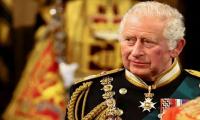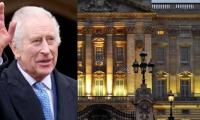The dream of a functional mass transit system in Karachi finally became a reality on Monday when all the bus stations of the Green Line Bus Rapid Transit (BRT) became operational.
Former prime minister Nawaz Sharif had laid the foundation stone of the project in February 2016 when the Pakistan Muslim League-Nawaz was in power in the federal government. After around six years, Prime Minister Imran Khan December 10, 2021, inaugurated the project, after which buses started to ply on the BRT corridor for limited hours in the morning. It was Monday, January 10, when the project became fully operational.
Going to his college in Saddar will no longer be a nightmare for Muhammad Owais who lives in Surjani Town and has to put his life in danger to get inside a bus cramming with passengers. “Monday was like a dream. I used a lift to get on a bus that dropped me at Numaish in not more than half an hour,” he said with a smile on his face. “The only problem was to understand how to get the ticket and get on the bus, but the staff was highly cooperative.”
On Monday, this scribe visited the starting station of the Green Line BRT, Abdullah Chowk, which seemed more like a tourist spot. The staff was especially deployed to train commuters in properly using the Green Line service.
There was a separate entrance for men and women inside the buses. As a bus stopped at the station, a security guard made waiting passengers form a queue and politely asked them to wait until the passengers inside the bus exited.
Television screens were installed in the buses to make commuters aware of the next bus station and news tickers were also flashing on them. Sweepers had also been deployed to maintain cleanliness at the stations. However, escalators and elevators at some stations were out of order, making it difficult for the elderly to find their way on elevated stations.
Cameras were installed inside stations as well as buses. A code of conduct has also been prepared for the travellers, which says that using drugs and cigarettes is strictly prohibited inside the buses. Playing videos on phone or other electronic devices at high volume is also not allowed. Pets and animals are also not allowed inside the buses.
A group of old-timers from Gilgit came all the way from Numaish to Abdullah Chowk to see how the mass transit system operated. After having got a ticket from the ticket counter and its QR code scanned, entering a bus was quite a task for them – let alone picturing the entire event.
Some young security guards present at the station were not only patient with the old group of friends but guided them until they had boarded the bus. “Karachi is the best city,” said one of them, Ashfaq. “We came all the way from Numaish in our car. Parked it. Got on the bus just to experience it. This is amazing,” he laughed.
Ali and Shahid, both teenagers, had got on a bus from UP Mor to see how the journey in a bus service would feel. “I am excited about going to college and tuition now,” said Ali who is waiting for his college to start. “I am content that at least I will not have to hang on footboards of public buses,” he said.
Hassan’s journey back to his home was not tiring at all on Monday. He works on II Chundrigar Road and got a lift from his colleague to Numaish from where he mounted on a Green Line bus that took him to his home in North Karachi.
“They are managing it properly right now, but there will be a problem in the future when the passenger rush will increase,” he said, adding that earlier, being stuck in Lasbela, Nazimabad and Gurumandir was a nightmare. “The back used to hurt like anything. Today, when the traffic was at standstill, the bus was rapidly heading towards home in its segregated corridor.”
The passengers who did not have a card for the payment of fares were asked to pay flat Rs55 for whatever station they wanted to go. Green Line BRT Project Manager Abdul Aziz told The News that there was a fare card that passengers could get from ticket booths for Rs100.
The actual cost of the card was Rs300, but the government was paying Rs200 subsidy per card for the passengers, he explained. “There are three ways to recharge the card,” he said, adding that passengers could get it recharged at the ticket offices at different stations or through vending machines at different stations and they were also introducing a mobile phone application for recharging cards.
For those who were using a paper ticket on which a QR code was printed, he said they had to pay Rs55 irrespective of how far or near their destination was. Aziz explained that the fair was flat because otherwise, it would not be convenient for them to keep the track of who entered the bus from where and where they left the bus in order to determine the fair.
When asked about faulty escalators and elevators, he replied that of the total 67 escalators, 47 were functional and the rest required repair. The project manager maintained that they had made special investment to train their staff in dealing with the passengers. “Most of our crew members are locals and young people who are well-trained,” he said, adding that the crew had been divided in three shifts.
At each station, there are six to eight security personnel in each shift, at least two people at the ticket booth, two male and two female staff at the ticket checking and QR code scanning portion, and at least two people have been deployed to see that the passengers enter and exit the buses properly, Aziz explained.
For bigger stations such as the Numaish station where the passenger count is higher, the number of staff is also higher, he said. The Green Line BRT runs from Abdullah Chowk in Surjani Town till Numaish with 22 stations in between. The full-length journey takes 45 minutes. The 18-metre-long articulated buses have 40 seats but a much larger overall capacity for passengers.
The picture shows a pharmacy. — AFP/FileThe Karachi administration has launched a campaign to check the expiry dates...
In this still, Karachi Mayor Barrister Murtaza Wahab addresses an event on April 25, 2024. — Facebook/Barrister...
In this still, Sindh Inspector General of Police Ghulam Nabi Memon chairs a meeting at the Central Police Office on...
Representational image shows police tape. — AFP/FileAn elderly man who ran a general store was shot and killed in...
A handcuffed suspect stands behind the bars with a policeman standing outside the jail in this undated image. —...
In this still, Sindh Chief Minister Syed Murad Ali Shah meets federal energy minister Owais Ahmad Khan Laghari in...







